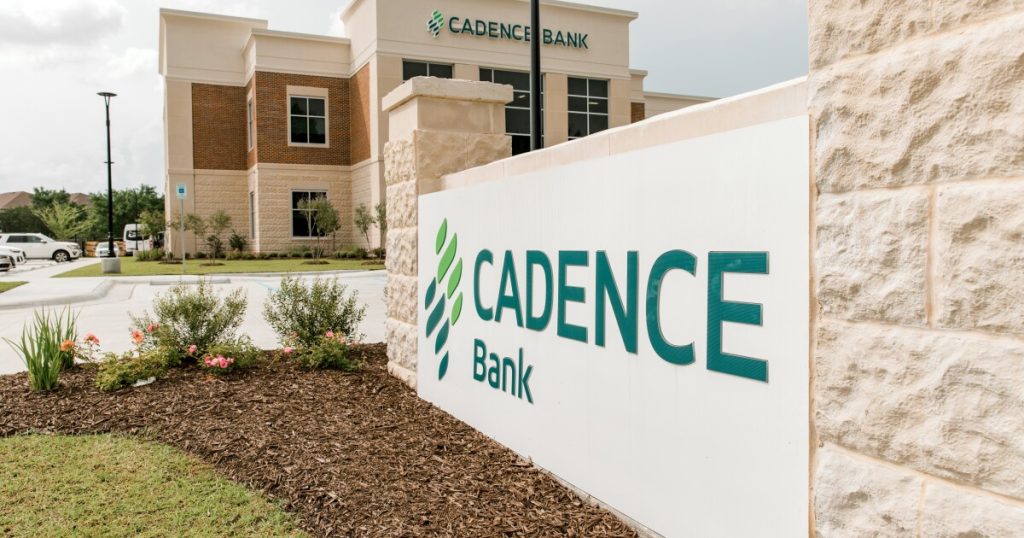Cadence Bank has agreed to pay a minimum of $20 million in cash for Industry Bancshares, a Texas banking company that ran into difficulties when rising interest rates pushed its investment portfolio under water.
For the $50 billion-asset Cadence, acquiring Industry’s six community bank subsidiaries adds 27 branches and $4.5 billion of deposits “right in the middle of our Texas franchise,” Chairman and CEO Dan Rollins said Monday on a conference call with analysts.
“We believe we’re going to be able to execute this [transaction] quickly and seamlessly because of the size [of Industry’s subsidiaries],” Rollins said. “It’s very similar to what we’ve been doing the past decade. We’ve got a playbook that makes this work.”

Trent Baker
Cadence announced the deal late Friday.
According to Rollins, Tupelo, Mississippi-based Cadence has done a dozen merger-and-acquisitions in the past decade. The most recent, for the $590 million FCB Financial Corp. in Savannah, Georgia, is scheduled to
For Industry, combining with Cadence would end nearly 115 years of independent operations but would offer the $4.4 billion-asset company the means to repair the
Though Industry
Regulators put Industry under a microscope as its financial situation worsened. In January 2024, the Office of the Comptroller of the Currency disclosed it had filed a notice of charges against three of Industry’s subsidiary banks in advance of planned cease-and-desist orders.
Regulators cited an investment strategy predicated on “long-term securities funded by short-term and rate-sensitive liabilities.” Industry initially pushed back, accusing the OCC of regulatory overreach.
Ultimately, however, it consented to cease-and-desist orders covering the holding company and three subsidiaries, First National Bank of Shiner, First National Bank of Bellville and Bank of Brenham.
Rollins said Monday that he does not expect those orders to slow the deal’s approval process. “We’ve spent extensive time with regulators on this, to make sure that we understood and they understood planning for this process,” he said. “I don’t think that any of the orders that they have will impact this in any way. The orders [pertain to] the safety and soundness of their operations … There would be no ongoing requirements post-close.”
Cadence is forecasting a close in the second half of 2025. It plans to sell 40% of Industry’s securities book, about $1.5 billion, at that time, with the rest to be liquidated “opportunistically” over time. If Industry succeeds in improving its capital position prior to completion, Cadence has agreed to increase the sales price, up to a ceiling of $60 million.
Rollins and Cadence said they believe the strategic and bottom-line benefits that accrue from buying Industry are considerable. In addition to solidifying Cadence’s position in the fast-growing Texas marketplace, the transaction is nearly 13% accretive to 2026 earnings.
The combined company would have $35 billion in loans along with $45 billion in deposits. That includes nearly $16 billion in Texas, where population and job growth are
Cadence is forecasting about $27 million in cost savings, even though it plans a few branch closures. Industry’s multibank business model offers plenty of opportunities for efficiencies, according to Rollins.
“When you look at cost saves, it’s all around the fact they’re operating six charters,” he said. “I think we feel confident that [the estimate] we put out there is very conservative.”
Cadence shares were down about 1% Monday afternoon at $28.48. In contrast to that seeming ambivalence, many analysts sounded optimistic.
“While the negative equity at Industry along with several consent orders is unusual, we have confidence in the Cadence management team’s ability to source and execute on M&A in general, ” RBC Capital Market’s Jon Arfstrom wrote in a research note.
A number of Industry executives, including Industry State Bank President J. Doak Hartley, are expected to join Cadence once the deal is finalized.
